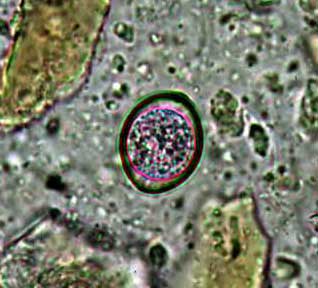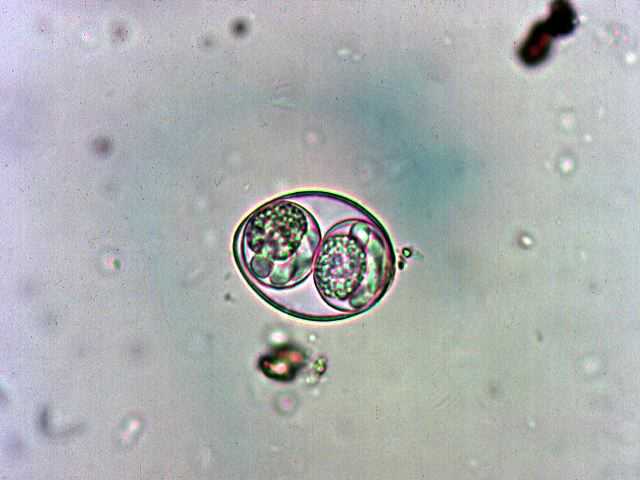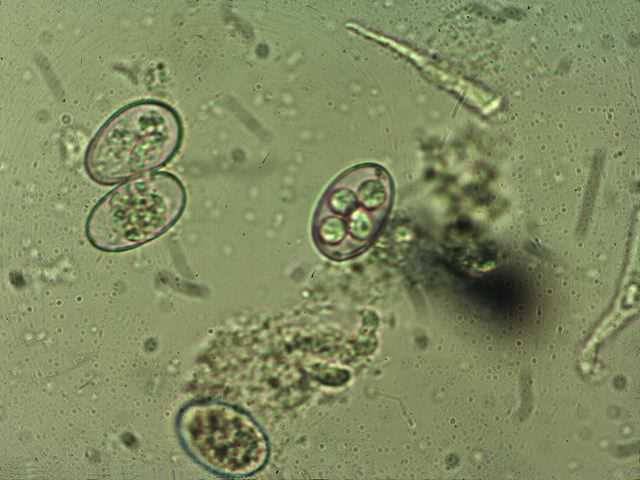Coccidia
(Cystoisospora spp.)
Cystoisospora spp. (=Isospora spp.) are apicomplexan protozoa transmitted directly by the faecal-oral route, especially in unhygienic, overcrowded environments. Species harboured by dogs are highly host-specific and a frequent cause of diarrhoea in puppies.
Distribution
Worldwide.
Clinical signs
Cystoisospora is most commonly seen in puppies. Common clinical signs include anorexia, vomiting, watery (rarely haemorrhagic) diarrhoea, dehydration and weight loss. Most dogs will develop a strong acquired immunity to infection, shedding only low intensities of oocysts as asymptomatic adults.
Diagnosis
Clinical signs may precede oocyst shedding and, in this case, diagnosis has to be based on history and clinical signs. Oocysts isolated on standard faecal flotation (S.G. 1.20) (SOP 1), are unsporulated (Fig 1) and develop to infective forms (sporulate) in 2-3 days (Fig 2).

Figure 1 Unsporulated oocyst of Cystoisospora canis on faecal flotation. (Image credit: The University of Melbourne parasite image library)

Figure 2 After incubation, oocysts of Cystoisospora spp. sporulate to contain two sporocysts, each with four sporozoites. (Image credit: University of Melbourne parasite image library)

Figure 3 Following incubation, oocysts of Eimeria spp. sporulate to contain four sporocysts, each with two sporozoites. (Image credit: University of Melbourne parasite image library)
Care should be taken to differentiate oocysts from those of Eimeria spp. or other coccidia (Fig 3) that may be mechanically ingested through coprophagy.
Treatment
Treat affected animals with oral sulfadimethoxine at 50 mg/kg daily for 5–20 days or oral trimethoprim-sulfonamide at 15-30 mg/kg for animals less than 4 kg and 30-60 mg/kg for animals more than 4 kg, for 6 days. Alternatively, a single dose of oral toltrazuril at 10 mg/kg or oral ponazuril at 50 mg/kg daily for 3 days can be used. If clinical signs persist, re-testing and re-treatment may be necessary.
Control
Pregnant females should be treated (as above) and bathed before whelping to remove sporulated oocysts on their hair coat. Ammonia-based disinfectants should be used for de-contamination of premises. For further control options refer to the General Considerations and Recommendations section.
Public health considerations
None.
